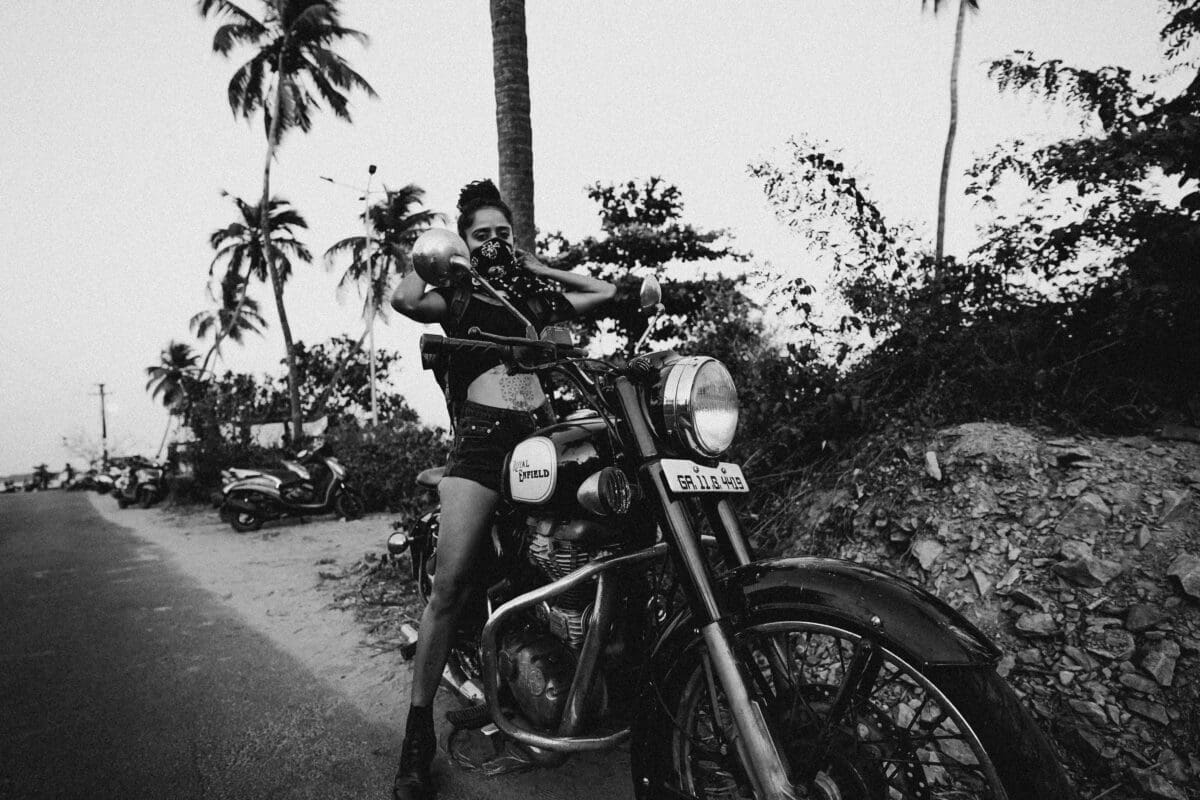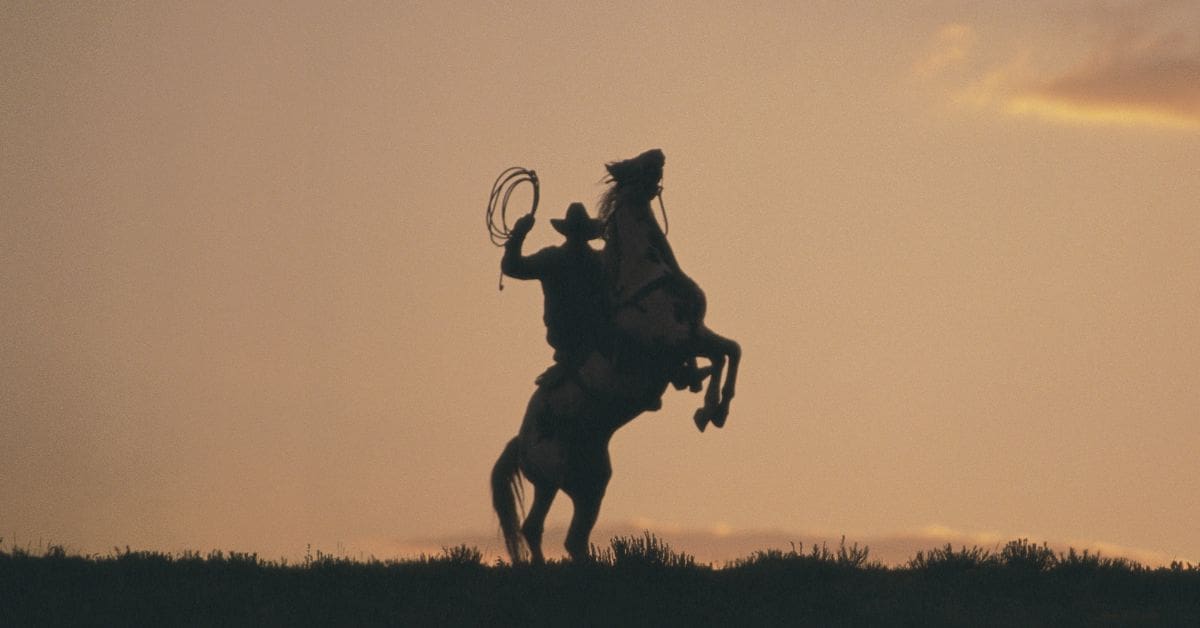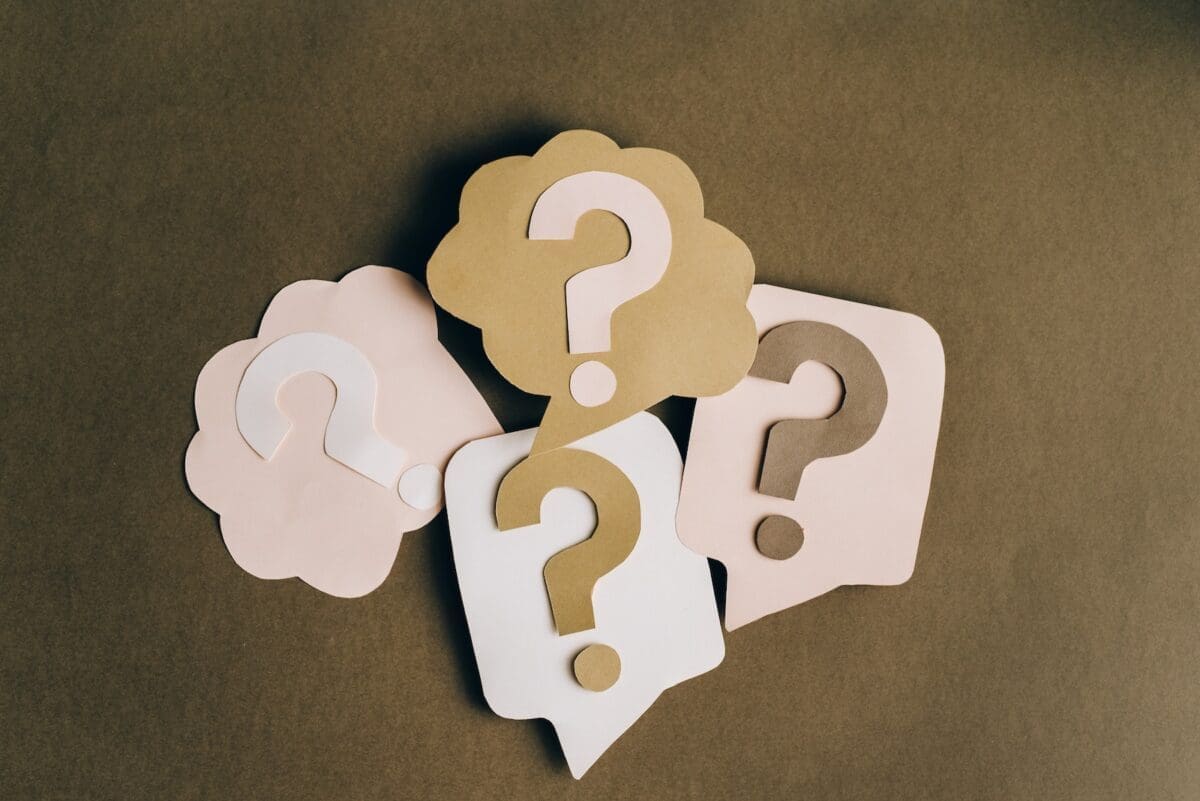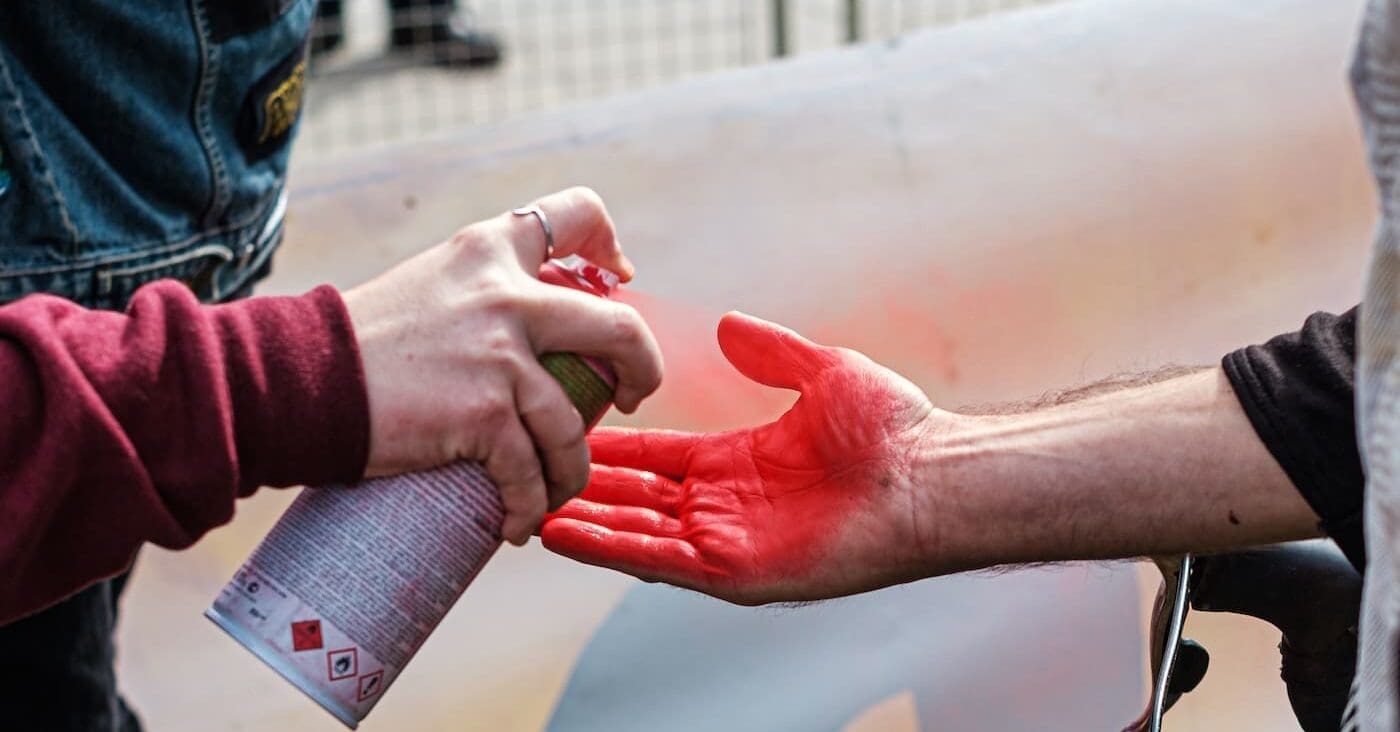If you want to create a strong brand identity, you not only need a powerful product. But, also a compelling customer experience. A product or service that solves real problems. Something that can lead to a loyal customer base. That is what branding does. It can make your audience experience your brand promise immediately.
You need to build a customer journey that reflects your brand’s unique personality. Marketing managers need a magical tool that can make their customers feel connected. To both the company and its products. This is what an archetype can do for you. Based on Carl Jung’s personality traits, these reflect the distinct experience offered by a brand.
Taking the archetype edition forward, this blog is based on the rebellious of all archetypes – The Outlaw Archetype. However, before moving ahead, let’s revise. If you need to recollect what a brand archetype is, read our blog post: ‘Brand Archetype-What are they and how are they useful?’
Meet the Outlaw Archetype

The Outlaw is also referred to as the Rebel Archetype. it represents a core desire for freedom and expression of its true self.
The Outlaw embodies revolution. It is also called the rebel, revolutionary, iconoclast, and misfit. They take risks and are progressive. They have courage in all situations. Brands like these reject stereotypes and aim to break the status quo. They do not follow societal conventions. Or the book of rules, either. A strong personality, they aim to change the game!
So, what does Outlaw branding look like? Here are some of the character traits:
- Bold
- Candid
- Controversial
- Polarizing
- Fearless
- Arrogant
- Dominant
- Unapologetic
- Idealistic
- Inspiring
Harley Davidson is a classic example of Outlaw branding!
Outlaws can passionately champion change. But their methods can be risky or reckless. Let’s explore their strengths and cautions:
Strengths
An outlaw could break the rules you have been used to yet be endearing and fascinating. They are unconventional and wild, which helps these brands to differentiate themselves from their competitors and create a loyal army of customers for them.
Watchouts
The biggest watch out with this branding is feeling helpless, dismissed, and unimportant. They stand a chance to lose their direction and their moral compass. It may use outrageous or disruptive behaviours sometimes to jolt people, which could snap its connection with its loyal customer base.
How to Apply the Outlaw Brand Strategy?

Since a lot of negative terms also are associated with this archetype, it sometimes becomes difficult for companies to adopt it into their brand strategy. Here are the nuances to the brand elements that can help you if you plan to use this archetype:
Colours
To represent the dominant personality associated with the outlaw archetype, Outlaw brands use a combination of colours like Orange, Red, and Yellow. These colours help the brand come out as strong and independent, believing in optimism and competition.
- The orange colour helps the brand represent itself as Friendly, Bold, Confident, Successful, Courageous, Stimulated, Fascinated, Happy, Creative, or Enthusiastic.
- Red brings out emotions such as Love, Power, Excitement, Boldness, Youthfulness, Passion, Energy, Heat, Strength, Desire, Sensuality, Intensity, and Speed.
- Yellow tends to impress upon qualities such as Happiness, Warmth, Optimism, Clarity, Competence, Brightness, Energy, Joy, Enthusiasm, and Enlightenment of the human brain.
Brand Communication
Using a positive personality and strong communication helps build a connection between the Outlaw with its target audience. The communication is direct, a clear indicator of the fact that the product or service is here to change things. These brands use a voice with an attitude that expresses contempt for conformity and a desire for change. They also use bold, revolutionary, dark, and sometimes destructive imagery. For example, the punk imagery of MTV.
Brand Persona
Outlaws are driven by:
- The desire to seek change
- A need to shake up norms
- The desire to seek revenge or retribution
Radical ideas do not scare the Outlaw. As a result, the brand persona defies convention, disrupts the existing quo, and leads lives that the majority would never dare to. Drawing from Carl Jung’s archetypal framework, Outlaw personas are loyal, outspoken, and occasionally brash.
Marketing Strategy
The outlaw branding highlights taking chances and leaving the boring status quo. Think of Apple as a brand and how its marketing strategy differs from all other phones. This has helped it create a niche for itself in the market. The belief is that by making the competition redundant in the discussion, the brand establishes itself as a unique product.
The Outlaw Industries and Categories

The Outlaw brand archetype is one of the most common archetypes in literature. The rebel child can be found in novels, stories, plays, movies, and many video games.
In the field of business though, the Outlaw archetype is best suited for the following industries:
- Automotive
- Motorcycles
- Construction
- Body Art
- Technology
- Statement Clothing
- Sports brands
The Outlaw Brand Archetype Manifestation: An Indian Case study

A lot of brands have recently been trying to adopt the outlaw archetype with product innovation and a unique mix of strong marketing and branding techniques. Indian brands such as Fast Track, TrulyMadly, Tata Tea, Happily Unmarried, and Sugar Cosmetics fit the Outlaw archetype framework.
Let’s take a closer look at a few of the Indian Outlaws:
Tata Tea
The communication aim for the brand from the very beginning has been to make Tata Tea the #1 tea brand in India and to associate tea’s inherent quality to awaken the mind and body with awakening a person from inaction towards social causes. The brand message was communicated visually through its unique packaging. The package design consisted of a visual message of the unique mix of ‘badi patti / choti patti’ which communicated that aroma and strength are equally balanced.
– Brand Value
It stands for being a refreshing drink with a combination of rich aroma, strength, and blend. It also stands for health and youth. The core desire of the brand’s campaign is to be a change agent for society.
– Communication Strategy
The hugely popular ‘Jaago Re’ campaign – which translates into ‘wake up’ proved as ‘waking up with a cup of Tata Tea’ was intended not only to be a campaign to physically persuade its consumers to wake up with tea. It was an appeal at an emotional level to wake up to their responsibilities, the situation in their country, and the actions that are imperative to its progress. The message stems from the idea to be responsible Indian citizens and build a strong societal connection.
The various elements such as #JaagoRe provide a high recall value and persuasive nature to the brand. The message strategy was to also give out the messages in Hindi and regional languages through TVCs and regional newspapers and in English through other media.
SUGAR Cosmetics
Sugar is a make-up brand owned by Fab Bag, a popular beauty, and grooming subscription service. The aim was to create the Sugar brand to be chic yet approachable, sophisticated but with the quirkiness to appeal to a younger demographic and most importantly, a brand that would stand on its own in a market dominated by larger global brands. A challenger brand!
– Breaking away from the conventional
The brand launched a few products that matched the Indian skin tone in a mostly fair-skin-dominated society. For this purpose, it debuted with products such as lipsticks, lip crayons, etc. in matte colours, which was a representation of the rebellious nature that the brand represented. It used the triangulated illustration style to give its products a distinctive visual identity.
– Imagery and Visuals
The company’s logo consists of a solid black circle with the gracefully curled, bold letter “S” in white in the center. The logo is designed to resemble a quality badge or a seal of luxury, expressing an elegant brand and proving that organic and natural cosmetics may also be expensive. The company’s visual design, which uses a monochromatic colour scheme, stands for a strong brand that values innovation and excellence in everything, and stands for style and elegance. A contemporary and assured wordmark contrasts with the classic and elegant logo to create a unified look and highlight the company’s forward-thinking nature.
Fast Track
Launched in 1998 and known for its quirky, edgy, and often brave creative campaigns over the years, Fastrack quickly established itself as an urban youth brand through its affordable watches and accessories. One word that sums up the brand would be “irreverent” – not the obnoxious, profane, or disrespectful kind, but rather in the witty and anti-authoritarian variety. This is clear from the company’s edgy, irreverent, and light-hearted advertising. The company’s persona constantly innovates, questions everything, pushes limits, and stays on the forefront.
The brand started by building resonance with its audiences by reflecting and addressing the tensions and issues relevant to them, which keep on evolving. Many of its campaigns won laurels and controversy in equal measure, but the brand still managed to create a unique positioning for the brand reflective of the emerging youth.
With the latest brand positioning with the tagline ‘you do you,’ the brands tend to communicate around the spirited gen Z with their fluid identity, freedom of expression, and unbridled spirit.
Is your Brand an Outlaw?

The Outlaw archetype is a great archetype for businesses looking to differentiate themselves from their traditional, mainstream, and “boring” counterparts in the market. Your company needs to be radical, surprising, disruptive, liberating, and countercultural if it wants to embody this brand. To be very sharp about choosing this archetypal personality, let us delve deeper into understanding the various sub-archetypes within the Outlaw archetype:
Rebel
A Classic Rebel pushes the boundaries to bring about societal change, a new viewpoint, or a reawakening because they are tired of tradition. The Rebel must watch out not to cross too many lines in its pursuit of reform since it can be motivated by resentment and bitterness.
Activist
An activist is someone who campaigns for a cause and looks to fundamentally alter some economic, political, or social institution. This sub-archetype inspires others to support its cause because it believes in the ability of the populace to bring about change.
Gambler
The Gambler enjoys taking chances. There are no restrictions on the amount of money the gambler would wager, which can cause addiction and compulsion. However, this sub-archetype is sociable and exudes charm.
Maverick
The Maverick exhibits intelligence, assertiveness, and fearlessness while defying convention. It has an independent streak a mile wide, as long as it steers clear of being reckless.
Reformer
Compared to, say, the Maverick, the Reformer’s pursuit of change is often a little more subtle and methodical. The Reformer, sometimes portrayed as a watchdog or a whistle-blower, looks for methods to strengthen the current system rather than fully overturning it.
If you wish to exhort your audience to resist following the crowd, if you act merely because it is necessary or because you want to, your brand might become the Outlaw. Look at the goods or services you provide. Do they alter the social or economic norms in your field and are different from the other niche brands in your industry, you might want to go ahead and opt for the outlaw archetype as your brand persona. However, be careful since outlaw brands often tread a narrow line since they may occasionally be seen as offensive.




